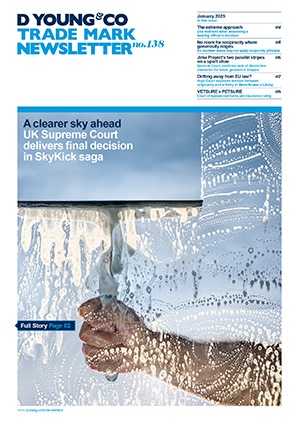Crocs Inc v EUIPO: Lack of novelty
Crocs Inc loses its appeal before the General Court resulting in the invalidation of its EU Community design for its famous foam clogs.
Case history
Gifi Diffusion (Gifi) applied to invalidate the contested design (below) claiming it lacked novelty as a result of the applicant’s disclosure of the design prior to the 12-month period preceding the date of priority.
Gifi identified three specific disclosure events, namely:
- the clogs were exhibited at a boat show in Fort Lauderdale, Florida;
- 10,000 pairs of clogs had been soled; and
- the clogs had been disclosed on the applicant’s website.
In support of its claim, it exhibited printouts from the applicant’s website which showed the clogs had been put on the market in July 2002 and exhibited in November 2002 at the aforementioned boat show; by 2003, “Crocs had become a bona fide phenomenon, universally accepted”; and a clog with a heel strap marked “© 2003”.
The Invalidity Division dismissed the application finding, inter alia, that insufficient evidence of prior disclosure had been provided. The decision was appealed before the Board of Appeal of the EUIPO which annulled the Invalidity Division’s decision, declaring the contested design invalid, and therefore resulting in Crocs’s appeal before the General Court.
The Crocs of the case
In support of its appeal, Crocs pleaded the following:
- The Board of Appeal’s admission of evidence that had been filed before it for the first time infringed Article 63(2) of Regulation No 6/2002; and
- The disclosures in question concerned events which could not reasonably have become known in the normal course of business to the circles specialised in the sector concerned and operating within the EU, (the specialised sector) within the meaning of Article 7(1) of Regulation No 6/2002.
Crocs argued, inter alia, its website was searched only by customers from Florida and Colorado and could not, therefore, reasonably have become known to the specialised sector as a) neither the applicant nor the address nor even the existence of its website was known to the specialised sector, b) it demonstrated there weren’t any links to the applicant’s website on other websites at the time, and c) the applicant’s website could not be found using search engines.
In dismissing the first plea, the General Court stated, inter alia, that:
- two of the exhibits submitted before the Board of Appeal were not “new” evidence, but simply better versions of previously submitted exhibits;
- the remaining contested exhibits could not, similarly, be regarded as “new” evidence but rather as additional to the evidence already submitted as these merely corroborate the facts already filed before the Invalidity Division; and
- these were relevant to the outcome of the proceedings before the Board of Appeal.
In dismissing the second plea, the General Court took a two-step approach, namely, it looked at whether the contested design had been disclosed to the public and, if so, could the disclosure reasonably have been known in the normal course of business in the specialised sector, that is professionals in the trade and manufacture of footwear within the EU? In reaching its decision, it made the following observations:
- the fact the website was technically accessible worldwide was not disputed;
- the applicant had failed to establish the requisite legal standard that its website, and/or the contested design, could not reasonably have become known in the specialised sector as a) it was not apparent from the evidence that the website could not be found by searching for the word ‘crocs’, b) the website could have become known by other means than through a search engine, such as, the exhibition at the boat show, (c) the boat show was an important international event making it unlikely for EU professionals from the footwear industry not to have become aware of the contested design, and (d) the clogs had been put on sale across a number of US states making it unlikely, given the important for the EU market of commercial trends in the US market, that it went unnoticed in the specialised sector; and
- Article 7(1) of Regulation No 6/2002 did not provide for any quantitative threshold with regard to actual knowledge of the disclosure events, contrary to the applicant’s claim.
The appeal was therefore dismissed in its entirety and the contested design declared invalid.
Case details at a glance
Jurisdiction: European Union
Decision level: General Court
Parties: Crocs Inc v EUIPO and Gifi Diffusion
Date: 14 March 2018
Citation: T‑651/16
